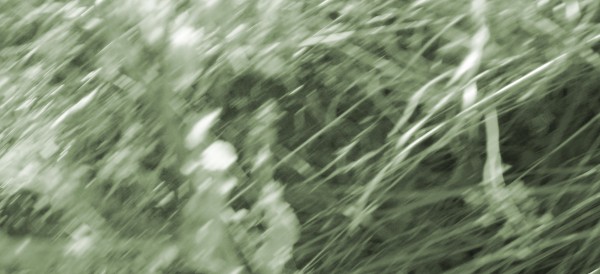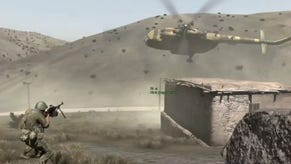The Flare Path Guide To Furtive Fact Gathering
Simulation & wargame news
In today's wary/warry world it's not always possible for mil sim developers to gain all the necessary permissions before mounting foreign research trips. The Flare Path understands this and, in the interests of keeping gung-ho game-crafters out of ghastly gaols, has drawn up the following indispensable guide to researcher survival. If your away team utilize these ten simple tips they'll almost certainly* return home safe, sound, and laden with quality intel.
*Tips do not apply to operations in North Korea, Iran, Burma, Belarus, China, Turkmenistan, Uzbekistan, Sudan, Somalia, Eritrea, Equatorial Guinea, Mali, Syria, Israel, Saudi Arabia, Yemen, Greece, Chernarus and parts of Somerset. Personnel safety not guaranteed. Most advice based on Something I Saw In Some Old War Movie Once rather than practical experience. FP does not condone espionage or unjust detention. FP hopes incarcerated devs the world over, speedily return to their loved ones.
PREPARATION
- Team unfamiliar with the language spoken in their destination country? At the very least, make sure they learn the 7 Golden Phrases before departing.
1.“Don't shoot!”
2. “I seem to be lost.”
3. “Excuse me, you haven't seen a puppy run past here have you?”
4. “A Nymphalis Galathea the size of a dinner plate! Wait until the International Institute of Lepidoptery hears about this!”
5. “Excellent work, Private! The next time I dine with the Colonel, your exemplary vigilance will be mentioned.”
6. “Are you aware that you're standing on my testicles?"
7. “How would you like to star in a multi-million dollar videogame?”
- Sand table sessions are a great way to familiarise fieldworkers with mission zone topography, and a splendid excuse for breaking out the wargame miniatures and indoor fireworks. If you don't have enough data to construct a useful sand table mount an expedition to rectify the situation.
- Amnesty International data reveals that 98% of developers detained during field trips had no facial hair. Ensure all staff, including females, grow shaggy LRDG-style beards before embarking.
EQUIPMENT
- In addition to packing standard camera equipment, consider kitting your team out with third-person cameras. The ability to peer round corners and over crests without risk of being spotted, has saved the bacon of many an intrepid sim scout.
- The sight of an edgy foreigner loitering with a long-lensed SLR is certain to arouse suspicion. With a stable of talented artists at your disposal, there may be occasions when it's worth leaving that Canon at home and taking a page out of Private Len Smith's extraordinary Great War sketchbook.
- In the hands of a skilled RC pilot, a small multi-rotor UAV can be a very effective recon tool. Why dodge dog patrols and tangle with razor wire when you can aviate over them with the help of £500 of clever consumer electronics?
INSERTION
- Test have proven a twisted ankle, shattered femur or flak riddled torso can seriously impair an operative's image-hunting abilities, hence FP usually recommends the Day Rover bus ticket (be sure to check timetables and carry appropriate change) or locally hired 4WD/moped/mule over the, admittedly enticing, HALO jump/helo fast-rope option.
EXFILTRATION
- Leaving a 'hot' mission zone quickly and safely, is the one of the most challenging tasks the adventurous researcher will face. Encourage your team to:
a) Plan multiple escape routes.
b) Cross and re-cross streams to confuse tracker dogs.
c) Carry drinking straws in case of last-ditch ditch/pond/latrine concealment situations.
d) Raid unattended washing lines/hen coops for disguises/provisions wherever possible.
e) Steal unattended tractors wherever possible.
IF THINGS GO PEAR-SHAPED
- Issue carefully worded statement claiming, slightly implausibly, that the team were 'on holiday'.
- Begin asking yourself difficult questions like...
“Have years of developing soldier sims and mixing with macho SMEs, fostered soldierly delusions amongst my staff?”
“In this age of Google Earth and easily accessed specialist publications is it really necessary to send staff to hyper-sensitive countries with well-publicised track records for detaining innocent hobbyists and holidaymakers?”
“Was it sensible to turn previous field trips into publicity opportunities?”
“Would it have been wiser to use knowledgeable local contractors to unobtrusively collect data and images?”
“Would any of the fans have noticed or cared if we'd chosen to model a non-miltarised area of Country/Region X then pasted some best-guess military installations onto the DEM?”
Mathé News
As I mentioned last week, spectacular Waterloo-era wargame HistWar has finally penetrated my “I'm-really-not-sure-about-that-GUI” square of suspicion. Despite unhelpful tooltips, detail-deficient battlefields, and a 3D mode that can seem slightly superfluous at times, I feel the game has brought me closer to the realities of Napoleonic battle management than ever before.
In between marshalling mistimed cavalry charges and bungled artillery re-deployments, I contacted Jean-Michel Mathé - HistWar's French fashioner - to find out where he was headed next .
RPS: What do you have planned for the next twelve months?
Jean-Michel: The continued evolution of HistWar. Soon, a new version will be available in two
different forms:
HistWar 2: LGdN (Les Grognards de Napoléon) will feature fifteen national armies including the French, Russians, Prussians, and Austrians.
HistWar 2: RCoW (Red Coats of Wellington) will be centred on the Peninsular War (1808-1814) and the Waterloo Campaign (1815).
Packages will be available to complete each product, thus giving access to all the
battles fought by the Empire between 1805 and 1815.
The improvements incorporated in the two new editions are mainly focused on graphics (new terrain rendering...
...3D models, and buildings) and AI (significant enhancement of Grand-Tactical AI, and the addition of Division and Brigade AI). Certain orders generated by the AI will be reported to the player for validation - a very interesting feature for the player who wishes to have finer control of his force.
Also the maximum size of the maps will be increased. New 40km x 30km maps will allow vast theatres of operations.
RPS: Looking back at the last 12 months, what coding tasks have devoured the most man-hours?
Jean-Michel: During the past year I spent a lot of time focussing on two main things.
The implementation of 1:1 and 1:2 scales (where each 3D figurine represents 1 or 2 real soldiers). This modification is not fully complete yet but has already led to important changes in the management of figurines. To replay Borodino with almost 300,000 visible combatants is a unique experience. Indeed, when you look at 1000 horsemen charging a square of 1500 infantry, it really gives you a good idea of the military forces engaged and of the reality of the battles of the time.
I've also poured a lot of energy into the development of the graphic procedures which will be
used for HistWar 2. Most of these procedures are already integrated into HistWar 1 and the players will be able to get a feel for them in a new demo and version '04' both coming very soon.
RPS: Are you happy with the current state of HistWar?
My answer is, of course, a bit mixed. On one hand yes, I am happy because today's HistWar is the result of many years of steady improvement, and usually runs without major problems. On the other hand, the planned changes are going to propel HistWar into another sphere.
The graphics will be brought bang up to date. The AIs are going to be improved in a really significant way. This will make the Grand Tactical AI very reactive (not the case in the current version).
I'm also aiming to improve the GUI once again, to help with army management. Finally, the player will be a lot more involved and have, on demand, the ability to handle orders generated by the AIs. So, most of the requests posted by the Histwar community are, hopefully, going to be satisfied.
RPS: Do you think it's more important for a wargame AI to be plausible than challenging?
Jean-Michel: HistWar is a game and a simulation. Because of this, the answer to this important question cannot be definitive. For those who wish to simulate the commitments of the period, it is important that the AI demonstrates behaviours which reflect the leadership realities of the period. So, the wargame has to do its best to take into account the fog of war, the management of command inertia and other operational constraints. To act under these conditions is not always easy and can be considered by some players as an obstacle to fun. However, through its numerous options, HistWar allows players to balance historicity with friendliness.
RPS: There are currently two books in the HistWar section of The Flare Path Reading Room. Would you care to add another?
Jean-Michel: 'Battle Tactics of Napoleon and His Enemies' (Brent Nosworthy) and 'The Art of War' (Antoine Henri Jomini).
RPS: Do you get time to play other wargames? If so, which ones do you find yourself gravitating towards?
Jean-Michel: No, I don’t … unfortunately. HistWar takes 100% of my time.
RPS: Thank you for your time.
The Flare Path Foxer
Seven image elements linked by a common thread. One golden FP Flair Point to the identifier of that thread; seven more to be shared between the de-foxers that explain, in detail, the seven links.























